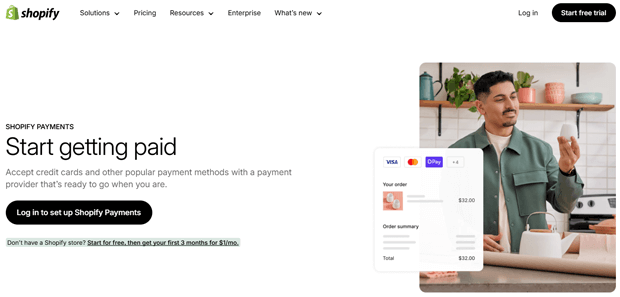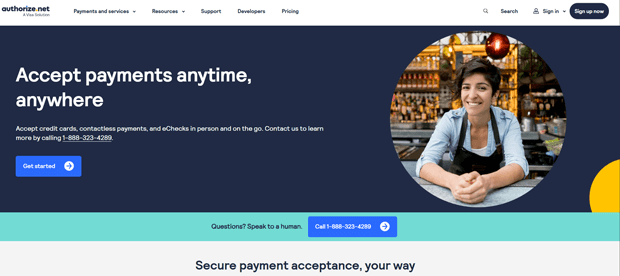Choosing the right Shopify payment gateway is one of the most crucial decisions you’ll make for your e-commerce store.
It directly impacts your customer’s checkout experience, your conversion rates, and ultimately, your bottom line. Did you know that nearly 70% of online shopping carts are abandoned? A clunky or untrustworthy payment process is a major culprit.
With the global e-commerce market projected to reach $8.1 trillion by 2026, ensuring seamless transactions through the best Shopify payment gateway is no longer optional – it’s essential for survival and growth.
This comprehensive guide dives deep into the world of Shopify payment gateways, offering a detailed comparison, setup instructions, and expert insights to help you make the perfect choice for your business.
We’ll explore everything from transaction fees and supported currencies to security features and integration ease, ensuring you have all the information you need to optimize your checkout process and boost sales.
Key Takeaways:
- Struggling with high cart abandonment rates? Discover how the right Shopify payment gateway can drastically improve your checkout flow and recover lost sales.
- Confused by the myriad of Shopify payment gateway options available? We’ll break down the top contenders, highlighting their strengths and weaknesses to simplify your decision.
- Worried about security and compliance? Learn about the crucial features to look for in a Shopify payment gateway to protect your business and your customers.
- Want to expand internationally? Uncover the Shopify payment gateways that support multiple currencies and global payment methods, unlocking new markets for your store.
- Curious about optimizing your transaction fees? We’ll provide insights into understanding different pricing models and choosing a Shopify payment gateway that aligns with your budget.
Understanding the Importance of Your Shopify Payment Gateway
Your Shopify payment gateway acts as the bridge between your customer and your bank account. It securely processes payments made on your Shopify store, ensuring a smooth and reliable transaction.
A well-chosen gateway not only facilitates payments but also enhances customer trust and satisfaction.
Conversely, a poorly chosen or unreliable gateway can lead to frustrated customers, abandoned carts, and a negative impact on your brand reputation.
Consider this: a study by Baymard Institute found that 18% of shoppers abandon their carts because the checkout process was too long or complicated.
Your Shopify payment gateway plays a significant role in the speed and simplicity of this process.
Key Factors to Consider When Choosing a Shopify Payment Gateway
Selecting the ideal Shopify payment gateway involves evaluating several critical factors:
- Transaction Fees: Different gateways charge varying fees per transaction, which can significantly impact your profitability, especially at scale. Understand the different fee structures, including per-transaction fees, monthly fees, and potential charges for refunds or chargebacks.
- Supported Payment Methods: Ensure the gateway supports the payment methods preferred by your target audience, such as credit cards (Visa, Mastercard, American Express, Discover), debit cards, digital wallets (Apple Pay, Google Pay, PayPal), and local payment options.
- Security: Robust security features are paramount to protect sensitive customer data and prevent fraud. Look for PCI DSS compliance and advanced fraud detection tools. According to a report by Juniper Research, online payment fraud is projected to exceed $48 billion globally in 2023, highlighting the importance of secure payment processing.
- Integration Ease: Seamless integration with your Shopify store is crucial for a smooth setup and hassle-free operation. Most reputable gateways offer straightforward integration processes.
- Customer Support: Reliable and responsive customer support is essential in case of any issues or queries. Check the availability and quality of support offered by the gateway provider.
- Supported Currencies: If you plan to sell internationally, ensure the gateway supports multiple currencies to provide a localized experience for your global customers. Offering prices in their local currency can increase conversion rates by up to 15%, as reported by a study by Worldpay.
- Payout Schedule: Understand how frequently the gateway will transfer funds to your bank account. Different gateways have varying payout schedules.
Here’s your content rewritten in a clean listing style for pros, cons, and key features:
Recommended Blogs for You:
👉 The Ultimate Shopify Store Setup Checklist: Launch Your Dream Store Today!
👉 Best Shopify Marketing Apps: Complete Comparison Guide
👉 Shopify Speed Optimization: Make Your Store Lightning Fast
👉 Shopify Email Marketing: Complete Strategy & Automation Guide
👉 Shopify Inventory Management: Complete Setup Guide
Top Shopify Payment Gateway Options: A Detailed Comparison
Shopify offers its own integrated payment solution, Shopify Payments, along with numerous third-party payment gateways. Here’s a detailed look at the leading options:
1. Shopify Payments

Pros:
- Seamless integration with Shopify stores
- Competitive transaction fees (often lower than third-party options)
- Unified dashboard for orders and payments
- Supports multiple currencies
- Often removes third-party transaction fees on Shopify plans
Cons:
- Availability depends on country
- High-risk businesses may not be eligible
Key Features:
- Automatic setup
- Fraud analysis
- Chargeback management
- Support for various payment methods
2. PayPal

Pros:
- Widely recognized and trusted globally
- Supports multiple payment methods (PayPal balance, bank transfers, credit/debit cards)
- Offers buyer protection
- Used by 41.8% of online shoppers worldwide (Statista, 2022)
Cons:
- Transaction fees can be higher than Shopify Payments
- May redirect customers away from your store during checkout (improving with newer integrations)
Key Features:
- Express Checkout
- Fraud protection
- International payment acceptance
3. Stripe

Pros:
- Highly customizable and developer-friendly
- Supports a wide range of payment methods and currencies
- Advanced fraud prevention tools
- Robust APIs for complex integrations
Cons:
- Steeper learning curve for non-technical users
- Transaction fees vary based on location and payment method
Key Features:
- Stripe Connect for marketplaces
- Stripe Radar for fraud prevention
- Extensive documentation and support
4. Authorize.Net

Pros:
- Long-established and reputable
- Strong security features
- Broad integration capabilities
Cons:
- Complex setup process
- Possible additional fees beyond transaction charges
Key Features:
- Advanced fraud detection suite
- Customer information management
- Recurring billing options
5. Square

Pros:
- Ideal for businesses with both online and offline sales
- Seamless POS and online integration
- Competitive pricing for smaller businesses
Cons:
- Transaction fees can vary
- Limited international availability compared to other major providers
Key Features:
- Point-of-sale (POS) integration
- Online payment processing
- Inventory management tools
Setting Up Your Shopify Payment Gateway: A Step-by-Step Guide
The setup process for your Shopify payment gateway will vary slightly depending on the provider you choose. However, here’s a general outline:
For Shopify Payments:
Go to your Shopify admin panel.
Click on “Settings” in the bottom left corner.
Select “Payments.”
In the “Shopify Payments” section, click “Manage” or “Activate Shopify Payments.”
Fill in your business details, including legal name, address, and banking information.
Follow the on-screen instructions to complete the setup.
For Third-Party Payment Gateways (e.g., PayPal, Stripe, Authorize.Net):
Go to your Shopify admin panel.
Click on “Settings” in the bottom left corner.
Select “Payments.”
In the “Third-party providers” section, click “Choose a third-party provider.”
Search for your desired Shopify payment gateway and select it.
You will be redirected to the gateway’s website to create an account or log in to an existing one.
Follow the instructions provided by the gateway to connect it to your Shopify store. This usually involves entering API keys or other credentials in your Shopify payment settings.
Ensure you configure the payment methods you want to accept within the gateway’s settings.
Test the integration thoroughly with a small transaction to ensure everything is working correctly.
Optimizing Your Payment Gateway for Higher Conversions
Simply setting up a Shopify payment gateway isn’t enough. You need to optimize it for a seamless customer experience and higher conversion rates:
- Offer Multiple Payment Options: Cater to a wider range of customer preferences by offering various payment methods.
- Ensure Mobile Optimization: With a significant portion of online shopping happening on mobile devices, ensure your checkout process is fully responsive and user-friendly on all screen sizes. According to Statista, mobile commerce is expected to account for over 70% of all e-commerce sales by 2025.
- Build Trust and Security: Display security badges and SSL certificates prominently on your checkout page to reassure customers about the safety of their transactions.
- Simplify the Checkout Process: Minimize the number of steps and form fields required to complete a purchase. Guest checkout options can also reduce friction.
- Provide Clear Error Messages: If a payment fails, provide clear and helpful error messages to guide customers on how to resolve the issue.
- Consider Local Payment Methods: If you sell internationally, offering local payment methods can significantly improve conversion rates in those markets.
FAQ Section: Answering Your Burning Questions About Shopify Payment Gateways
What is the best Shopify payment gateway for small businesses?
For many small businesses, Shopify Payments offers a compelling combination of ease of use, competitive fees, and seamless integration.
However, consider your specific needs, target audience, and potential for international sales when making your decision.
Are there any hidden fees associated with Shopify payment gateways?
It’s crucial to carefully review the fee structure of any Shopify payment gateway. Look out for transaction fees, monthly fees, chargeback fees, refund processing fees, and potential cross-border fees.
Can I use multiple payment gateways on my Shopify store?
Yes, Shopify allows you to set up multiple payment gateways. This can provide more options for your customers and potentially reduce the risk of losing sales due to a single gateway experiencing issues.
How do I handle chargebacks with my Shopify payment gateway?
The process for handling chargebacks varies depending on your chosen Shopify payment gateway.
Generally, you will receive a notification of the chargeback and have the opportunity to provide evidence to dispute it.
What are the security requirements for Shopify payment gateways?
All reputable Shopify payment gateways adhere to strict security standards, including PCI DSS compliance, to protect sensitive payment information. Ensure your chosen gateway has robust security measures in place.
How do I change my Shopify payment gateway?
You can change your Shopify payment gateway at any time through your Shopify admin panel in the “Payments” settings. Be sure to carefully follow the setup instructions for your new gateway and test it thoroughly before fully switching over.
Conclusion: Choosing the Right Gateway for Your Success
Selecting the optimal Shopify payment gateway is a critical investment in the success of your online store.
By carefully considering factors like fees, supported payment methods, security, and integration ease, you can choose a gateway that not only facilitates smooth transactions but also enhances your customer experience and drives sales.
Remember to continuously monitor your payment gateway’s performance and adapt your strategy as your business evolves.
By prioritizing a seamless and trustworthy checkout process, you’ll be well-positioned to thrive in the dynamic world of e-commerce.



